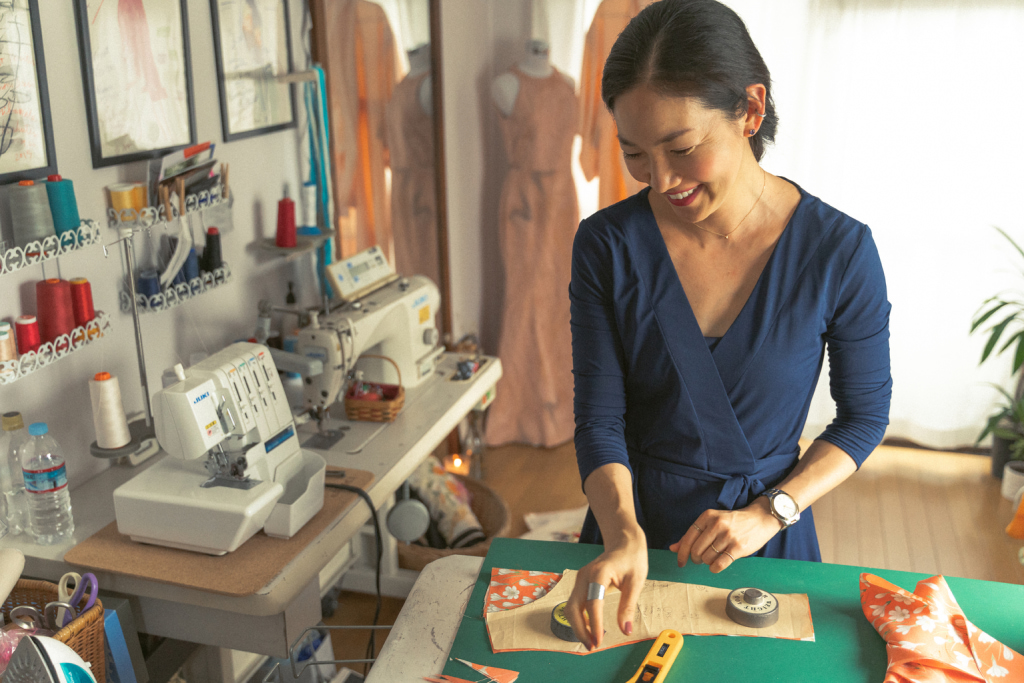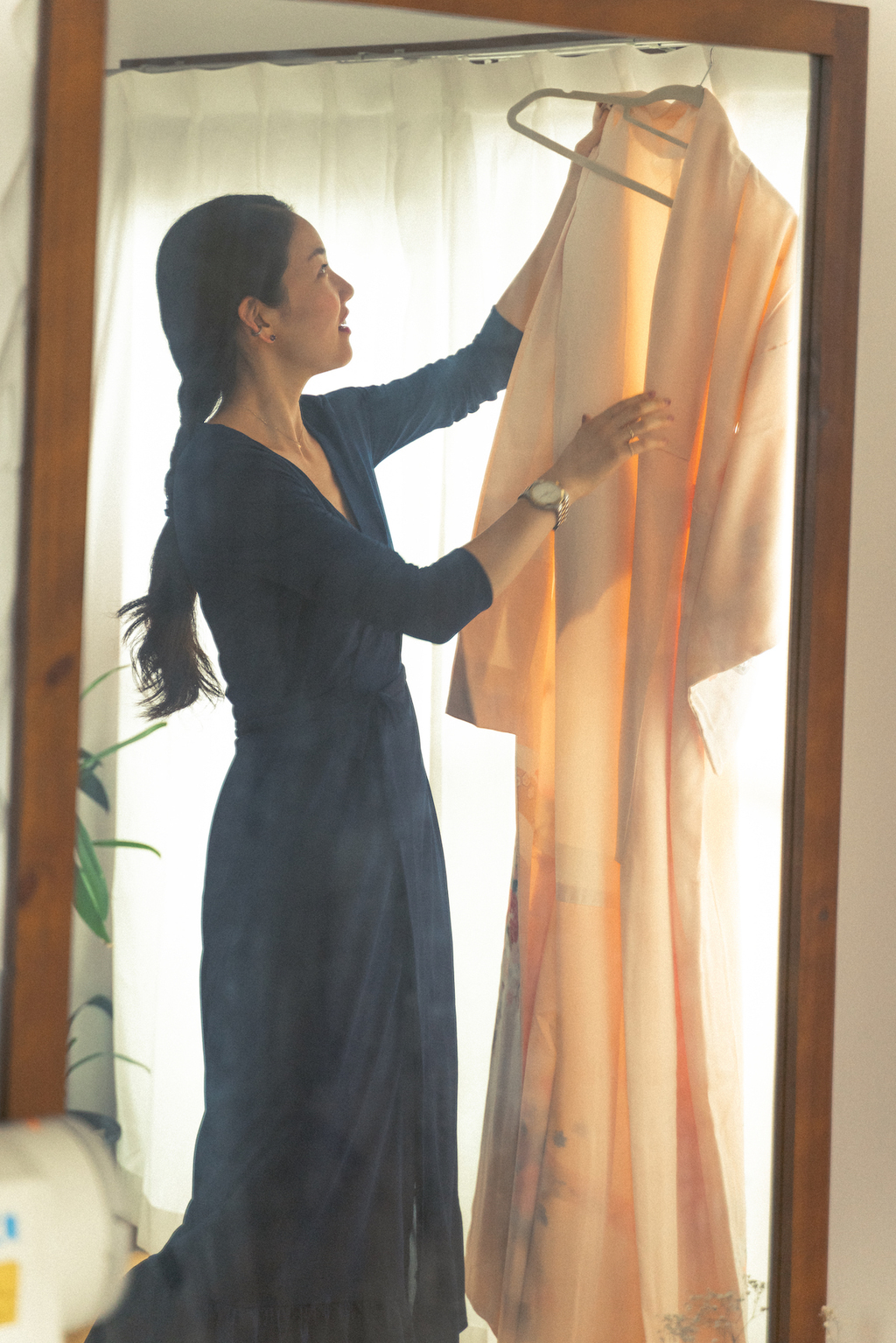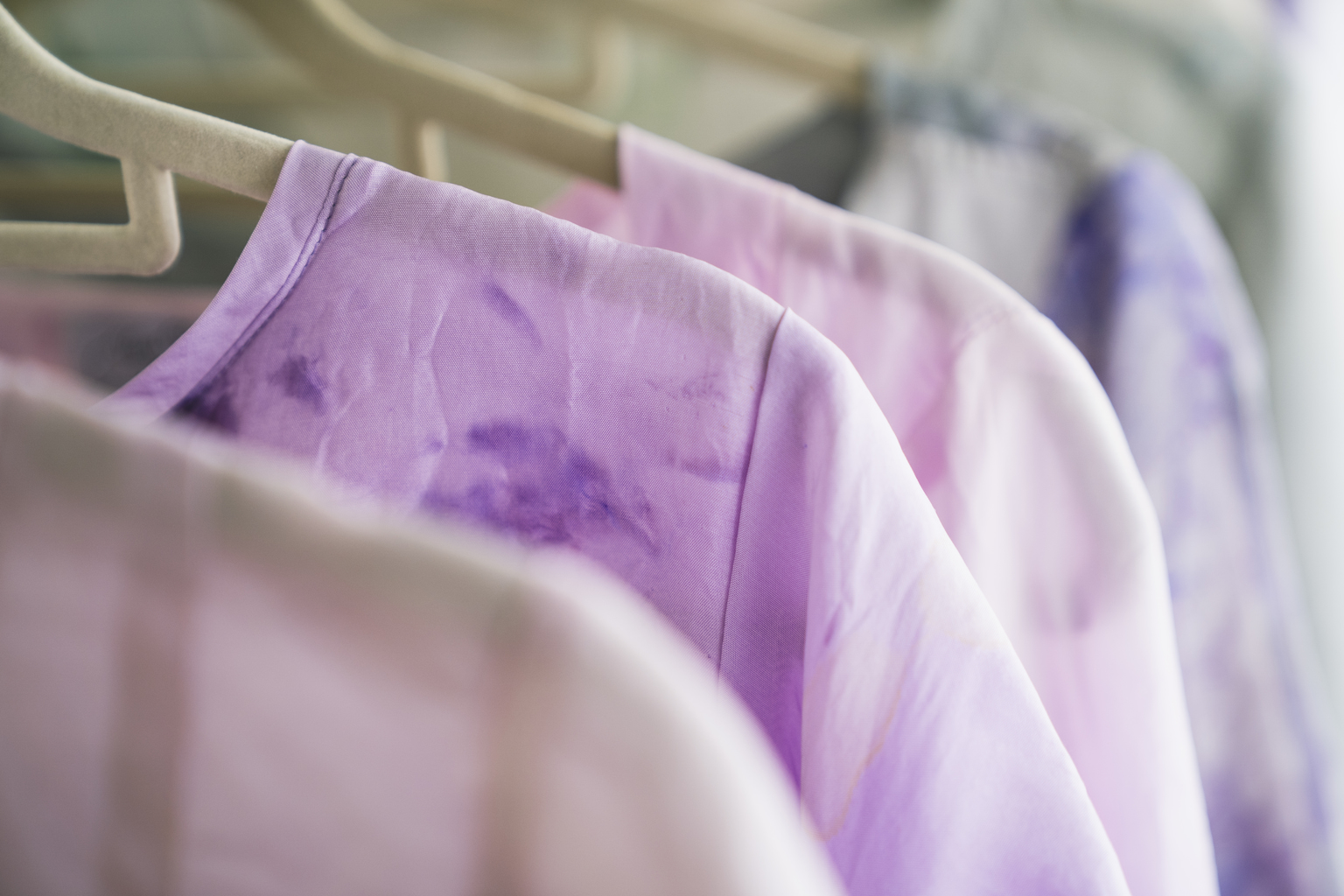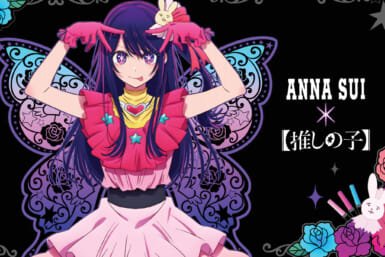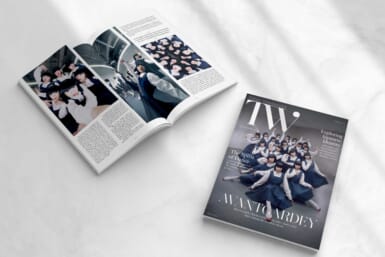Many of us love fashion, but behind the racks and labels, do we know where the shirts on our backs actually originate from? This is the kind of question consumers are asking these days. It’s why there is growing support for sustainability and why more people are rejecting mass production. Labels like Vivat Veritas are representative of this new wave. It’s a brand with a Japanese twist, utilizing second-hand and vintage kimono to be upcycled into modern pieces. We chat with the company’s founder Chie to understand more about the ins and outs of running her own label and what initially drew her to craft from kimono.
1. How did you start your career in fashion?
I actually didn’t go to fashion school. I studied journalism in Japan and in the US, got married and continued living in the latter while working a day job. It was a regular nine-to-five position and unlike Japan, it didn’t come with any expected overtime. I had a lot of free time and at one point, a friend offered to lend me her sewing machine.
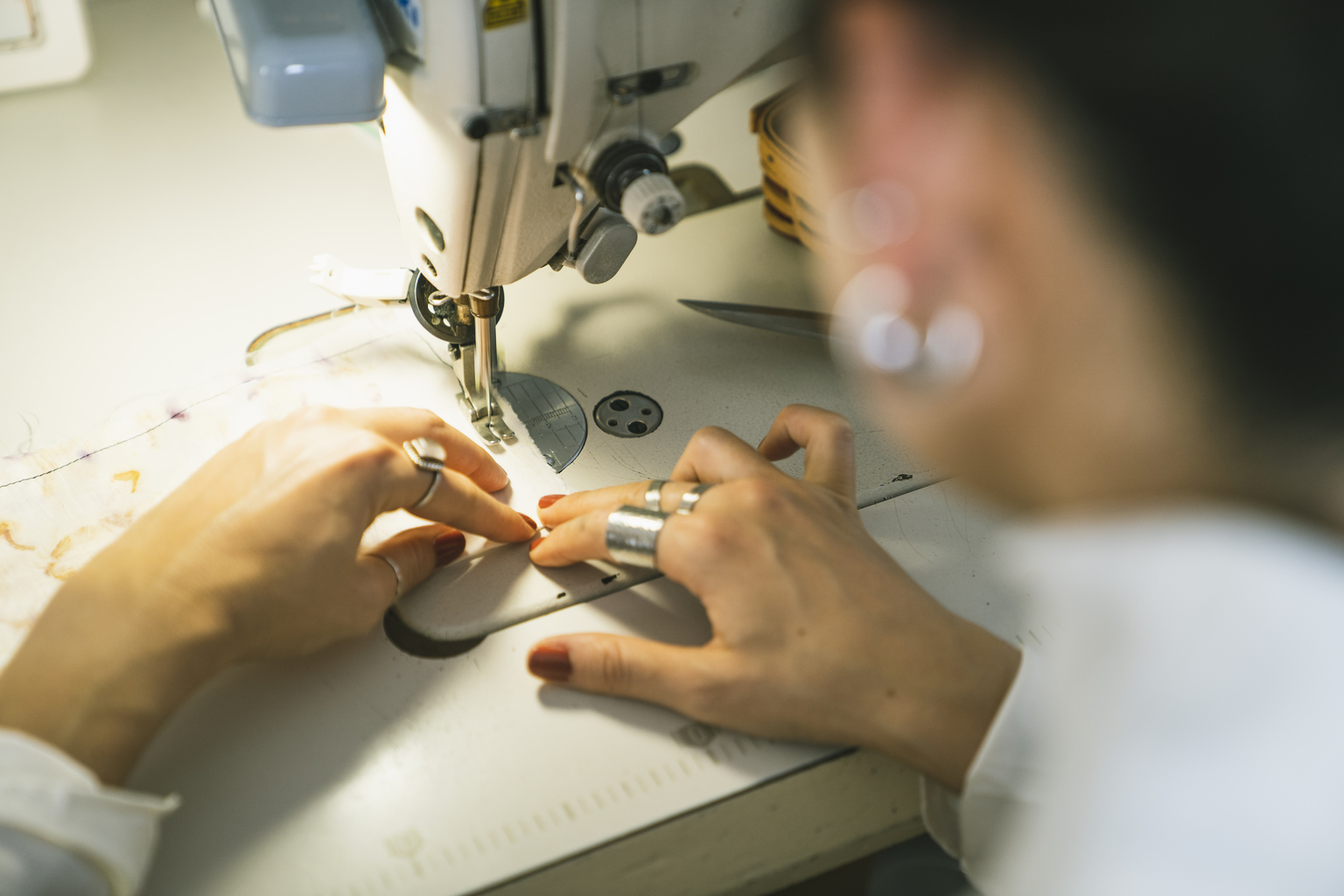
It started off with small things around the house like making pillowcases or adjusting the length of my curtains. But when I was going fabric shopping one day and looking at some patterns, I realized I could try to make clothes for myself. I was only 22 then and didn’t have much money to shop, so it seemed like a great idea.
The very first thing I made took me three whole days. There were lots of mistakes, some of which I even cried over. But in the end, I did it. It was a wrap dress made with stretch fabric and I wore it to work. People complimented me on it and I loved that I was able to say that I made it myself. Eventually I created so many clothes, there wasn’t enough space to store them in my closet.
2. When did you make your first sale?
There was a monthly market in Philadelphia called First Friday where a street would be closed off so people could sell their artwork. I decided after work one day that I would bring my clothes there to sell. I hung my dresses on a fence as I didn’t even have a proper rack for them. Not many people stopped by but some did and they bought my clothes. One of the girls even came back later to tell me she wanted more. I was selling them so cheap back then. Handmade dresses for $30 that I had spent hours working on. But it thrilled me that somebody was willing to pay for something I had enjoyed making.
I sell a lot online now, but that wasn’t as much of a thing back when I first started. People were hesitant about buying clothes online because they couldn’t try them on. One of the first platforms I started on was Etsy and by the end of my time there I had slowly been able to make a total of 600 sales.
Even after we moved back to Japan, I continued to juggle my day job while doing fashion on the side. For a while I was embarrassed to tell people that I still worked there. What people perceive as success is being able to quit your day job to pursue your dream full-time. That was my goal for a while but I’ve realized that it’s okay to have multiple jobs. More than okay in fact, it’s better because it’s more secure. I actually really like my corporate job. The experience I’ve gained from it has helped me navigate sewing from a business perspective.
3. What are some of the challenges you’ve faced in building your own business?
I wish I could just sit here and sew all day long, that’s probably what would make me happy. But that’s also the difference between a hobby and a business. To run a business, you have to learn how to sell. I find marketing can be draining but I do my best to try new things and to listen to marketing podcasts. I’ve also had to commit to a posting schedule for my business’ Instagram but I treat it as work. I wouldn’t necessarily say everything was a ‘challenge’ though. It’s a blessing to be able to learn new things and I’ve met so many different people thanks to my business.
4. What inspired you to upcycle kimono?
I’m someone who doesn’t say “no” much and I’m always up for a challenge. Before focusing on kimono upcycling, I was designing a lot of wedding dresses. One of my clients asked me to make a dress from kimono and even provided me with the fabric. I loved working with it and while doing so, I found myself coming up with lots of ideas for clothes I wanted to make for myself.
I grow a lot just from accepting orders from different customers. Sometimes their requests can be a bit crazy but it is fun thinking of unique ways to meet their expectations.
5. Are there any challenges specific to using kimono as the base for making clothes?
It depends on the type of fabric and design. Some kimono are made from silk, wool or polyester and they respond differently when you work with them. Some might have very small prints, others very large ones. In the case of large prints, you have to match the patterns up or it could look strange.
There are some unique opportunities using kimono. For example, I like using obi for smaller items such as backpacks and computer cases because it’s very sturdy and thick.
6. There’s a growing concern for the future of kimono. Why do you think this is the case?
I think there’s a lack of interest in kimono, especially with the younger demographic. It’s not very practical to wear. I do see many still wearing yukata in the summer for festivals but it’s precisely because it’s much easier to put on that people are able to adopt it. With kimono, there’s such a huge process involved and most of the time you can’t even put it on without help. You might have to attend a class to learn how to do it. I’ve also heard that older women, dubbed the “kimono police,” will publicly correct you if you’ve worn kimono in the wrong way and it’s not fun to receive that kind of response. Kimono should be something that brightens up your day so I think people shouldn’t take it so seriously.
I’ve been very lucky that the response to upcycling kimono has been super positive. People bring me kimono they no longer need and ask me to turn it into something else. Tastes change over time, some simply want to make good use of their older pieces so that they can continue wearing them in a different way.
7. What is your favorite piece that you’ve made so far?
I like the style of a long dress with a surprise in the back. A deep cut for example or a lace-up makes it interesting. Those are some of the pieces that I personally like to wear and also like to make. To be honest, I tend to forget about my dresses once they’ve been sold. I know some artists covet their pieces and hope to keep them for themselves. I don’t feel that way. I’m actually so glad when somebody buys something of mine and I never look back on it. It makes me happy to see what I’ve made being used, rather than just having it sit there.
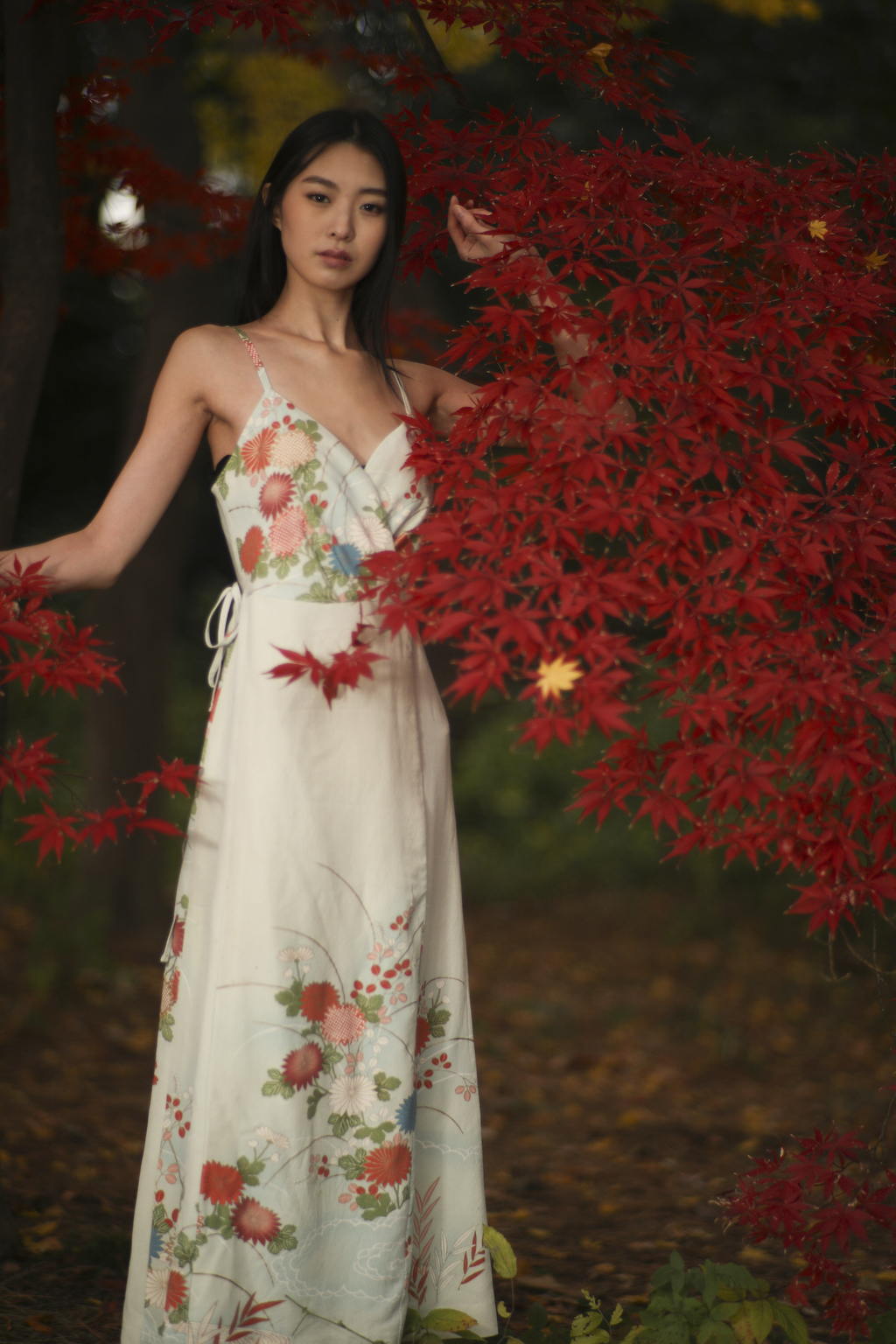
At the end of last month, I participated in a group exhibition alongside some other artists at the Grand Nikko Tokyo Daiba. For my piece, I decided to make it out of uchikake, an extravagant but heavy type of kimono that brides wore back in the olden days. The result was a mermaid dress in a striking red color with a crane pattern on it, which I’m quite proud of. I wanted to make something formal since it was going to be showcased at a hotel.
8. What’s next for Vivat Veritas?
Before the pandemic I was doing a few fashion shows. I’d like to get back into that and this time, with a combination of both men and women walking my runway. I’ve also previously incorporated models over the age of 40 and models who are under 160 cm. I think diversity is the most accurate representation of my brand because my clothes aren’t for celebrities. They are for regular people who want unique pieces.
For my next project I’ll be collaborating with an artist in Kumamoto. She uses wax to dye fabric so I’ll be using one of her original works to make pieces like dresses, underwear and small pouches. These items will be sold at a department store in Kumamoto.

I’ve also created an online course in Japanese, teaching people how to sew. I think there’s a lack of educational content online for the Japanese audience in regards to sewing so I hope I can encourage people to pick it up.
9. Any advice you could give to someone interested in pursuing their own business in fashion?
Building endurance is my biggest tip. There were times where I didn’t sell for a while and I wondered if this was the end of my business. But what sustained me was my willingness to keep on sewing even if nobody bought anything. Sometimes difficult customers come along and there are times when it can be so busy it feels like I don’t get a break. Throughout all of that, you just need to keep going.

